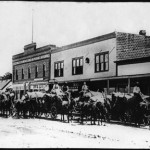 By the time Ernest Thompson Seton arrived in Clayton, N.M., in 1893 as a hired gun to kill wolves, nearly all the wolves were dead. Post-Civil War New Mexico had welcomed an influx of cattle ranchers and sport hunters who saw the gray wolf as a varmint, a nuisance, something easily expendable with poison, a bullet or a rope.
By the time Ernest Thompson Seton arrived in Clayton, N.M., in 1893 as a hired gun to kill wolves, nearly all the wolves were dead. Post-Civil War New Mexico had welcomed an influx of cattle ranchers and sport hunters who saw the gray wolf as a varmint, a nuisance, something easily expendable with poison, a bullet or a rope.
The wolves that survived had grown cunning. They abandoned hunting in daylight, lest they become the hunted. They not only shunned the strychnine-laced meat that Seton left for them, but carried it away and hid it under debris. They avoided his steel traps, yet left bold footprints around his stone cabin at night.
The steps that Seton would eventually take to kill six wolves turned his path back on itself, recreating Seton as one of the leading conservationists of his time.
This weekend, the History Museum opens the exhibit Wild at Heart: Ernest Thompson Seton, celebrating the life of this artist, author and co-founder of the Scouting movement. On Thursday, May 20, guest curator David L. Witt, author of Ernest Thompson Seton: The Life and Legacy of an Artist and Conservationist (Gibbs Smith, 2010), spoke at the Fray Angélico Chávez History Library’s Brainpower & Brownbags lecture series.
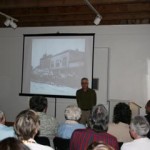 He only had an hour, so Witt chose to focus on that pivotal year, beginning in 1893, when Seton brought his wolf-hunting skills to New Mexico: “At thirty-three, he almost certainly had more blood on his hands than anyone else in Clayton. None of it was human,” Witt writes in the book.
He only had an hour, so Witt chose to focus on that pivotal year, beginning in 1893, when Seton brought his wolf-hunting skills to New Mexico: “At thirty-three, he almost certainly had more blood on his hands than anyone else in Clayton. None of it was human,” Witt writes in the book.
As he began his lecture, Witt warned the 35 attendees that “there are some dark parts; it’s about wolves. But it has a happy ending,” he added, “though not necessarily for the wolves.”
As Seton tried and failed in his early New Mexico hunts, he spent his free time studying the wildlife he could find – primarily, kangaroo rats – and ended up becoming one of the first scientists to publish drawings of the rats and their burrows.
(Also during that eventful year, he inadvertently invented a cattle brand for rustlers needing to re-burn the flanks of their stolen goods to camouflage the original brand. His explanation was that, as an artist, he was kindly answering some questions of a man whom he later discovered was a cattle-thief.)
Seton’s Calvinist upbringing also drew him into doubt in New Mexico – namely the religious belief that children are born in “total depravity” and must be made “good.” Seton decided he had always believed children were born good, and more important, could be kept on their own higher path by nurturing a bond with the great outdoors – thus planting the seed that would eventually become the Boy Scouts of America.
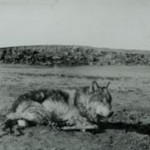 Wolf blood would yet be spilled before Seton’s great transformation would take place. The story of how Blanca and Lobo died is a difficult one, Witt acknowledged in his lecture. He described the manic, melancholy howling of Lobo after Blanca was killed. He took care to give the audience only brief glimpses of either wolf in their fatal traps (the black wolf “Lobo” in his trap, at left).
Wolf blood would yet be spilled before Seton’s great transformation would take place. The story of how Blanca and Lobo died is a difficult one, Witt acknowledged in his lecture. He described the manic, melancholy howling of Lobo after Blanca was killed. He took care to give the audience only brief glimpses of either wolf in their fatal traps (the black wolf “Lobo” in his trap, at left).
The death of Lobo sparked in Seton an internal debate based on this question, Witt said: “Why do we as humans carry on this war against nature … destroying habitat and species?
“He spent the rest of his life trying to answer that question,” Witt said.
The exhibit explores how he answered it, in his literary and scientific output, in his art, in his studies of Native peoples, in the summer camps he established in Connecticut and Santa Fe that, in 1910, became the Boy Scouts, with Seton as co-founder. He became a man who today ranks among the likes of John Burroughs and John James Audubon, with a distinctly New Mexico twist.
We hope this exhibit inspires visitors to take a fresh look at their own relationship to the natural world — in part by acknowledging the matters that are dark and violent, and in another part by celebrating those that bring us joy. (Below, White-Winged Crossbills, oil on academy board, 1883, courtesy of the Academy for the Love of Learning.)
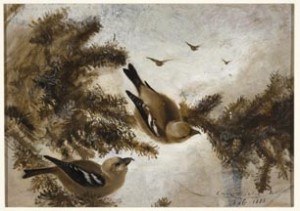
As Witt writes:
New Mexico provided Ernest Thompson Seton with the environment he required for deep spiritual reflection, first in the winter of 1893, and then again in the 1930s and up to the end of his life. Ever present in that process was his keenly felt responsibility for causing the death of Lobo. The King of Currumpaw, specimen #677, a seventy-eight-pound male gray wolf of the semi-arid grasslands, had, in his way, worked a kind of magic. By forcing Seton to ask “WHY?” Lobo helped him on his journey from wolf killer to student of the Buffalo Wind. Seton made a transformation within himself, putting the best of what he had learned to work its way in the world – where it is working still.
Opening weekend (May 22 and 23) is free for everyone, with special events in the Palace Courtyard. (See the schedule here.) The exhibit runs until May 8, 2011, with a full year of lectures, hands-on workshops and children’s storytellers to get you and your family in touch with your inner naturalist — and to keep the work of Seton going forward.
But why wait? Take a moment to ponder the Seton painting below (The Rooky Woods, watercolor, 1891, courtesy of the Philmont Museum). Let it play on your imagination and carry you into a walk through a forest. Hear the flap of the birds’ wings, the rustle of the leaves. Pick up a pen or a paintbrush and create. Plan your next walk – through your own rooky woods, your neighborhood or your backyard.
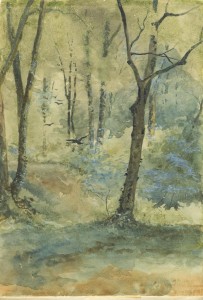


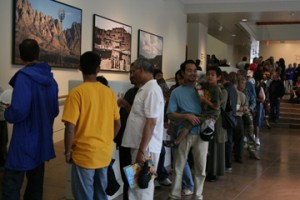

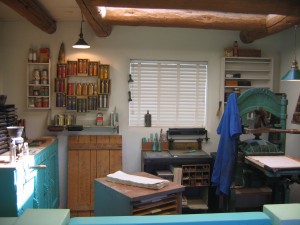
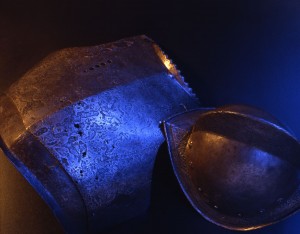
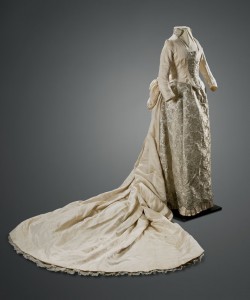
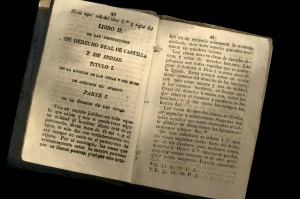
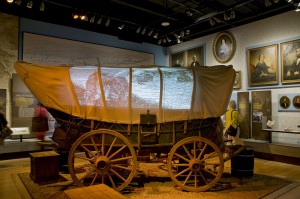
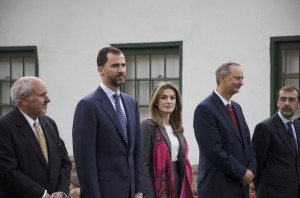
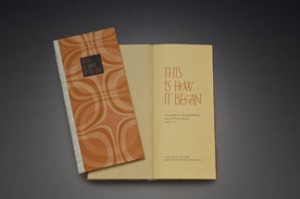
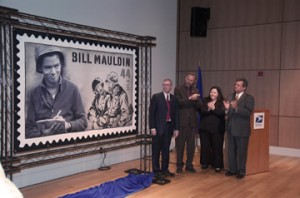
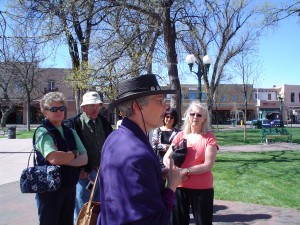 “The Italians did not have tomato sauce,” declared Pat Kuhlhoff. “The Swiss did not make chocolate. And there was never a potato famine in Ireland until Christopher Columbus discovered the Americas.”
“The Italians did not have tomato sauce,” declared Pat Kuhlhoff. “The Swiss did not make chocolate. And there was never a potato famine in Ireland until Christopher Columbus discovered the Americas.”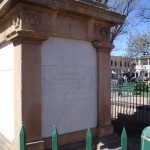 Standing in the Plaza, Kuhlhoff points to the obelisk commemorating those who died in the so-called Indian wars. She tells of how the word “savage” was chiseled out of its inscription –
Standing in the Plaza, Kuhlhoff points to the obelisk commemorating those who died in the so-called Indian wars. She tells of how the word “savage” was chiseled out of its inscription – 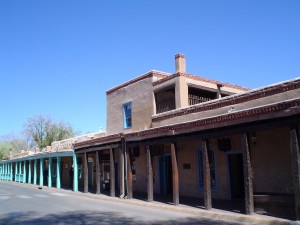 On the corner of Cathedral and Palace, she compares and contrasts Territorial, Pueblo, Mission and Romanesque architectural styles.
On the corner of Cathedral and Palace, she compares and contrasts Territorial, Pueblo, Mission and Romanesque architectural styles.